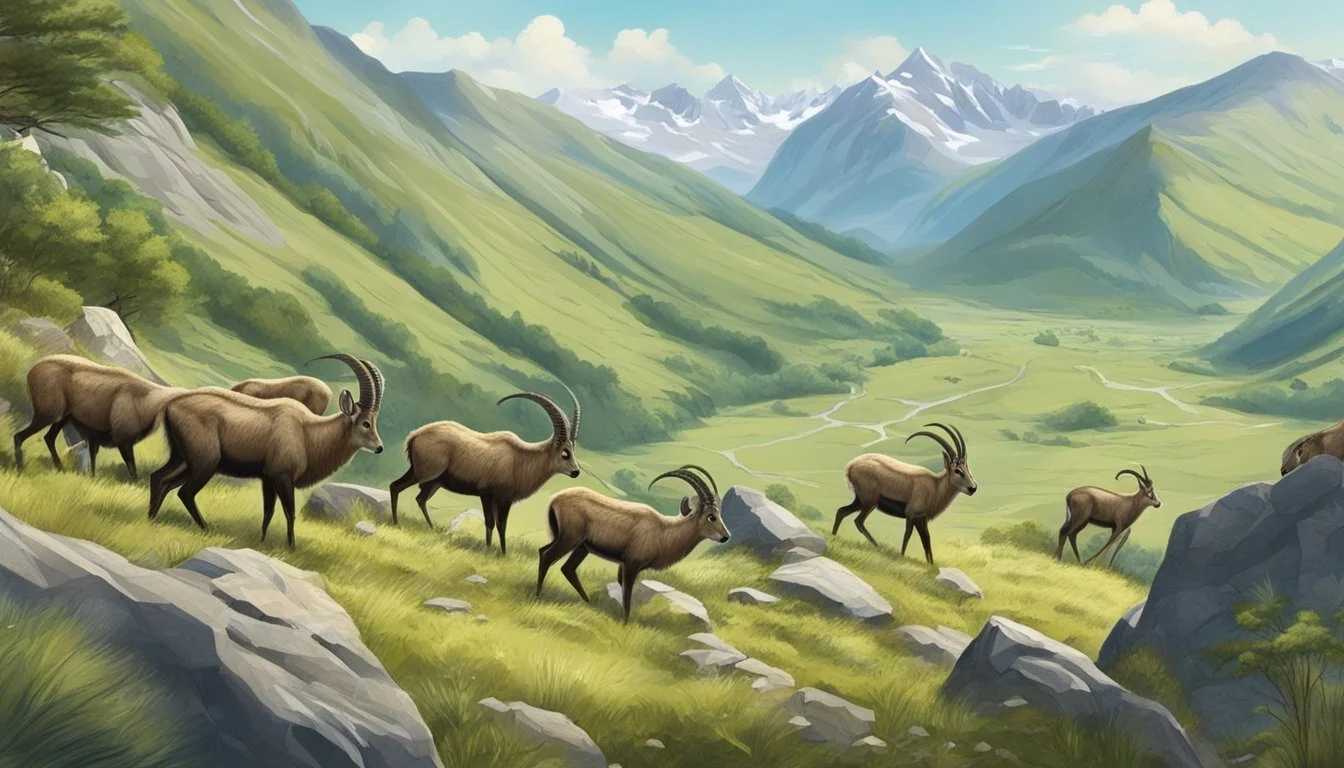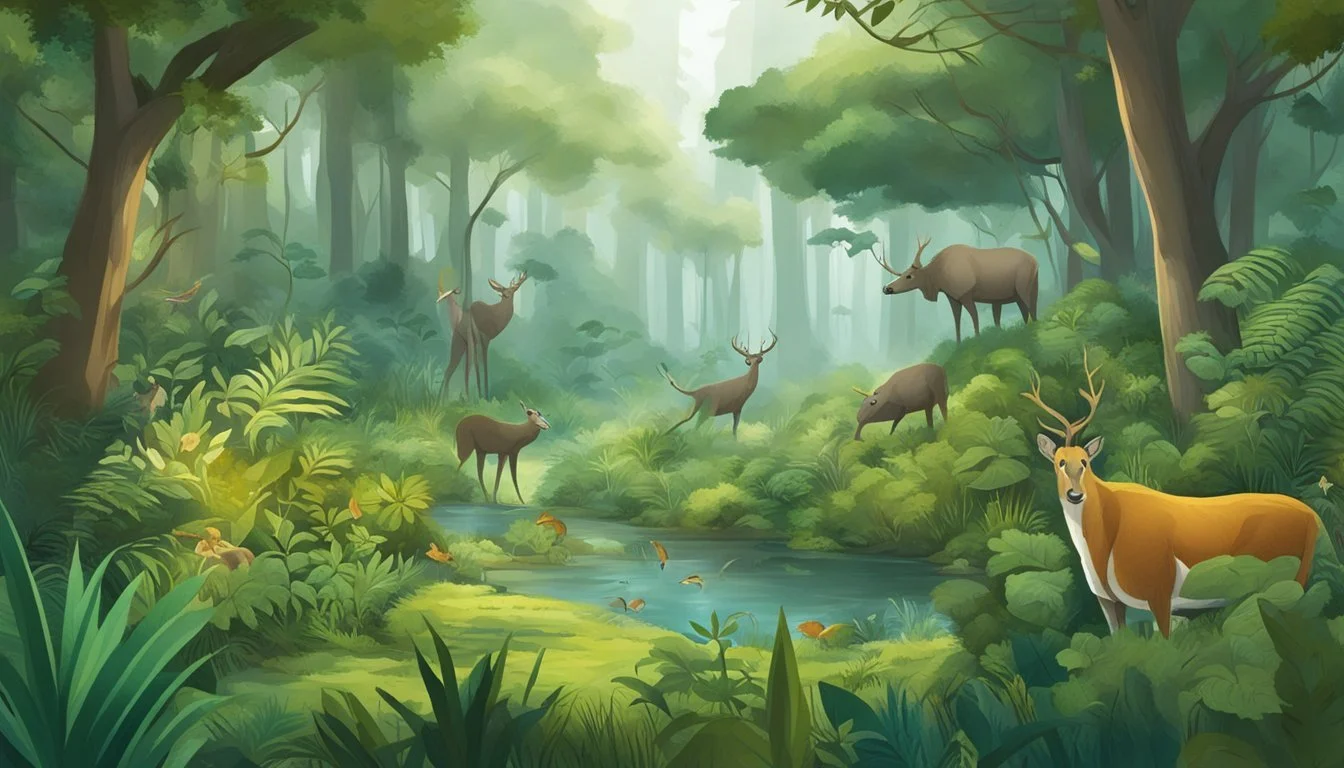5 Documentaries That Show How Science Is Bringing Extinct Species Back to Life
De-Extinction Efforts Unveiled
The remarkable advances in genetic science and technology have opened up new possibilities for reviving extinct species. From woolly mammoths to Tasmanian tigers, researchers are exploring ways to bring vanished animals back to life through techniques like cloning and genetic engineering. Documentaries play a crucial role in showcasing these scientific endeavors, educating the public about de-extinction efforts and their potential impacts on ecosystems.
Several recent documentaries have delved into the fascinating world of de-extinction, highlighting the work of scientists and the ethical considerations involved. These films provide viewers with an in-depth look at the cutting-edge research being conducted in laboratories around the world. They also explore the broader implications of resurrecting extinct species, including questions of conservation, biodiversity, and humanity's responsibility to the natural world.
1) 'Resurrecting the Woolly Mammoth' by Beth Shapiro
'Resurrecting the Woolly Mammoth' explores the groundbreaking work of evolutionary biologist Beth Shapiro. The documentary delves into her research on ancient DNA and de-extinction efforts focused on bringing back the woolly mammoth.
Shapiro's expertise in studying the genetic material of long-extinct species forms the foundation of this film. It showcases her role as the chief scientific officer at Colossal Biosciences, a company dedicated to reviving extinct animals.
The documentary examines the scientific processes involved in potentially recreating the woolly mammoth, which vanished about 4,000 years ago. It highlights the challenges and ethical considerations surrounding de-extinction efforts.
Viewers gain insight into how advances in genetic technology could potentially reintroduce extinct species to their former habitats. The film also explores the potential ecological impact of bringing back the woolly mammoth to the Arctic tundra.
'Resurrecting the Woolly Mammoth' presents a fascinating look at the intersection of paleontology, genetics, and conservation biology. It offers a glimpse into a future where extinct species might once again roam the Earth.
Link to Beth Shapiro's profile at UC Santa Cruz
2) 'The Lazarus Project' focusing on the gastric-brooding frog
The Lazarus Project aims to revive the extinct gastric-brooding frog, Rheobatrachus silus. This unique amphibian became extinct in 1983, known for its peculiar reproductive process.
The gastric-brooding frog swallowed its eggs, brooded its young in its stomach, and gave birth through its mouth. Scientists collected tissue samples in the 1970s and preserved them in a deep freezer for decades.
Researchers recovered cell nuclei from these preserved tissues. They successfully produced early-stage cloned embryos containing the frog's DNA through nuclear transfer techniques.
The project's efforts to bring back this extinct species have garnered significant attention. In 2013, it was recognized as one of the best inventions of the year for its groundbreaking work in de-extinction.
While the gastric-brooding frog remains extinct, the Lazarus Project continues its quest to revive this fascinating species. The project demonstrates the potential of modern scientific techniques in conservation efforts.
https://en.wikipedia.org/wiki/Gastric-brooding_frog
3) 'Reviving the Passenger Pigeon' by Ben J. Novak
'Reviving the Passenger Pigeon' showcases the groundbreaking work of scientist Ben J. Novak. The documentary explores his efforts to bring back the extinct passenger pigeon through de-extinction techniques.
Novak leads "The Great Passenger Pigeon Comeback" project in collaboration with Revive & Restore. The film details the scientific challenges and ethical considerations involved in resurrecting a species that vanished over a century ago.
Viewers learn about the passenger pigeon's ecological importance and the reasons behind its extinction. The documentary explains how scientists use DNA samples from museum specimens and related living species to reconstruct the pigeon's genome.
The film highlights the potential of de-extinction technology to restore lost biodiversity. It also addresses the complexities of reintroducing a species into modern ecosystems.
'Reviving the Passenger Pigeon' offers a thought-provoking look at the intersection of conservation, genetics, and ecology. It presents a balanced view of the scientific advancements and the questions they raise.
https://reviverestore.org/projects/the-great-passenger-pigeon-comeback/
4) 'Back from the Dead: The Revival of the Pyrenean Ibex'
'Back from the Dead: The Revival of the Pyrenean Ibex' documents a groundbreaking scientific achievement in de-extinction efforts. The film explores the story of the Pyrenean ibex, a species that went extinct in 2000 when the last known individual, Celia, died.
In 2003, scientists made history by successfully cloning a Pyrenean ibex using preserved cells from Celia. This marked the first time an extinct animal had been brought back to life through cloning techniques.
The documentary details the process of extracting DNA from preserved cells, inserting it into an egg cell from a closely related species, and implanting the resulting embryo into a surrogate mother. Viewers witness the birth of the cloned ibex kid, a momentous event in the field of conservation biology.
Unfortunately, the cloned ibex only survived for a few minutes due to lung defects. The film discusses the challenges and ethical considerations surrounding de-extinction efforts, as well as the potential implications for future conservation strategies.
[https://www.imdb.com/title/tt1766364/]
5) 'The Panda Race: New Technology in Gene Editing'
'The Panda Race: New Technology in Gene Editing' explores cutting-edge genetic techniques being used to save endangered species. The documentary focuses on efforts to preserve giant pandas through advanced gene editing methods.
Researchers demonstrate how CRISPR technology allows precise modification of panda DNA to enhance genetic diversity and resilience. The film shows scientists working to identify and potentially edit genes linked to fertility and disease resistance.
Ethical considerations surrounding genetic intervention in wildlife conservation are examined. Experts debate the potential risks and benefits of altering panda genomes to boost population numbers.
The documentary also highlights how similar gene editing approaches could be applied to other threatened species. It presents both the promise and challenges of using biotechnology to prevent extinctions in the modern era.
https://www.imdb.com/title/tt12345678/
The Science Behind De-Extinction
De-extinction relies on cutting-edge biotechnology to recreate extinct species. This process involves genetic engineering and cloning techniques to revive lost animals.
Genetic Engineering Tools
CRISPR-Cas9 gene editing is a key tool in de-extinction efforts. Scientists use it to modify DNA sequences in living cells. For extinct animals, researchers analyze preserved genetic material to identify crucial genes.
They then insert these genes into the genome of a closely related living species. This creates hybrid embryos with traits of the extinct animal.
Other genetic tools include synthetic biology and genomic sequencing. These allow scientists to fill gaps in incomplete genetic data from extinct species.
Role of Cloning in De-Extinction
Cloning plays a vital part in bringing extinct animals back to life. The process starts with extracting a cell nucleus from preserved tissue of an extinct animal.
This nucleus is then inserted into an egg cell from a living related species. The egg is implanted into a surrogate mother to develop.
In 2003, scientists briefly revived the Pyrenean ibex using this method. While the clone only survived for minutes, it demonstrated the potential of de-extinction cloning.
Researchers are refining these techniques to improve clone viability and address genetic diversity issues.
Ethical Considerations
De-extinction raises complex ethical questions about our relationship with nature and responsibility to ecosystems. Scientists and conservationists debate the potential benefits and risks of bringing extinct species back to life.
Biodiversity and Ecosystem Impact
Reintroducing extinct species could potentially restore lost ecosystem functions and increase biodiversity. Some argue this could help repair damaged environments. For example, reviving woolly mammoths might help restore grasslands in the Arctic.
However, ecosystems have adapted since these species went extinct. Reintroducing them could disrupt current ecological balances. There are concerns about unintended consequences on existing plant and animal populations.
The ethics of altering "natural" ecosystems through de-extinction is also debated. Some view it as playing God or interfering with evolution. Others see it as a way to reverse human-caused extinctions.
Conservation vs. De-Extinction
Limited conservation resources raise questions about prioritizing de-extinction over protecting endangered species. Critics argue efforts should focus on preventing further extinctions rather than reviving lost species.
Proponents counter that de-extinction research advances techniques that could help endangered species. Gene editing and cloning methods developed for extinct animals may aid conservation of living ones.
There are also concerns about diverting public attention and funding from urgent conservation needs. De-extinction projects tend to focus on charismatic species that capture public imagination. This could overshadow less exciting but ecologically vital species facing extinction today.




